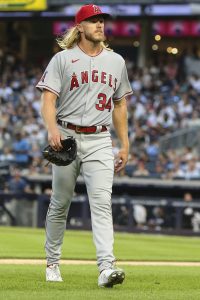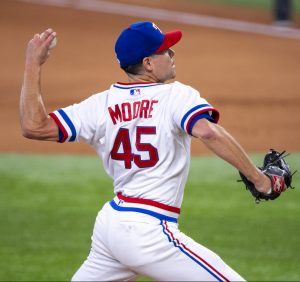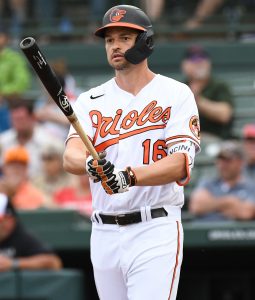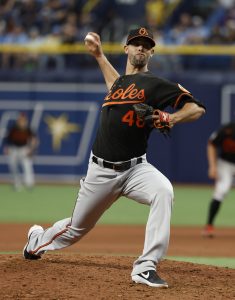Not much has gone right for the Tigers so far in 2022. They’re without the majority of their projected starting rotation. Former No. 1 overall pick Casey Mize underwent Tommy John surgery, while their other recent No. 1 overall pick, Spencer Torkelson, has looked overmatched in the big leagues so far. Javier Baez, who signed a $140MM contract over the winter, has had a roller coaster season en route to an overall .211/.248/.372 batting line. Their trio of productive veterans from the 2021 season — Jonathan Schoop, Jeimer Candelario and Robbie Grossman — are all struggling through arguably the worst seasons of their career.
The 2022 Tigers serve as a reminder that not all rebuilding efforts go as smoothly as the most famous success stories in Houston and Chicago, but for all the bleak outcomes thus far, they’ve had their share of successes. Tarik Skubal has struggled of late but looks like a bona fide mid-rotation starter or better through a half season of innings. Outfielder Riley Greene, the No. 5 overall pick in 2019, has ascended to the top of Baseball America’s Top 100 prospect rankings and held his own through his first 99 plate appearances. And perhaps most surprisingly, despite all the struggles in the rotation and the tax that typically takes on a team’s relief corps, the Tigers rank third in all of baseball with a collective 3.05 bullpen ERA.
Success from Detroit’s collection of relievers shouldn’t be a total surprise, though few would’ve expected quite this extent. Flamethrowing lefty Gregory Soto established himself as a quality ’pen option last year, and former Rookie of the Year Michael Fulmer handled his early-2021 move to the bullpen fairly well. The Tigers brought in one of the more underrated free agents on the market this past offseason when they inked lefty Andrew Chafin to a two-year pact (the second season of which is a player option).
That said, the Tigers have gotten contributions from some fairly unexpected names. Joe Jimenez was once hailed as the closer of the future in Detroit, but he pitched his way out of a roster spot in 2021, when he was optioned to Triple-A on multiple occasions (for the first time since 2017). This year, he looks like the power arm he was always expected to be. Twenty-six-year-old righty Alex Lange, acquired in the 2019 trade that sent Nick Castellanos to the Cubs, has improved upon his 2021 rookie strikeout and walk rates, setting himself up as a potential long-term option in the late innings. Righty Will Vest, briefly lost to the Mariners via the Rule 5 Draft but thankfully (well, for the Tigers) returned midway through that season, has a 3.55 ERA in 33 frames (and a 2.25 mark if you set aside one fluky five-run meltdown). Starter-turned-reliever Tyler Alexander has a 1.06 ERA out of the ’pen — albeit with less convincing secondary marks.
There have been other contributors, but the overarching point here is that the Tigers have received unexpectedly sound contributions from their relief corps — including the expected veterans and some more controllable, young options alike. Over the next three weeks, those more experienced arms figure to be among the more popular names on the trade market. Let’s run through some of the possible names available…
Michael Fulmer, RHP, 29 years old ($4.95MM salary, free agent at season’s end)
Fulmer, in particular, seems a likely candidate to be moved. After injuries decimated the former rotation stalwart’s mid-20s, he’s returned as a shutdown option in the late innings, serving as the primary bridge to the hard-throwing Soto. Through 33 1/3 innings so far in 2022, Fulmer owns a 1.89 ERA with a 24.2% strikeout rate against an 11.7% walk rate. Fulmer’s K-BB% could certainly stand to improve, but it’s hard to overlook the fact that he’s yielded just one earned run over his past 18 innings (0.50 ERA), punching out 30.1% of his opponents along the way.
Since moving to the ’pen on a full-time basis on May 5 of last season, Fulmer boasts a superlative 2.10 ERA with 23 holds, 16 saves, an above-average strikeout rate and walk/ground-ball tendencies that are only slightly below par. He’s limiting hard contact and barrels, averaging 95.3 mph on his heater and has generally looked the part of a quality late-inning arm. Fulmer is a free agent at season’s end, and his $4.95MM salary is generally affordable. It’d frankly be a surprise if the Tigers didn’t trade him.
Andrew Chafin, LHP, 32 years old ($5.5MM salary, $6.5MM player option for 2023)
As with Fulmer, it’d be a surprise if Chafin lasted in Detroit beyond the deadline — although the circumstances surrounding him are slightly different. He’s technically signed through the 2023 season, but next year’s $6.5MM guarantee comes in the form of a player option. Based on Chafin’s 2.30 ERA, 30.3% strikeout rate, 7.3% walk rate and 50.8% ground-ball rate, it’d take a mammoth second-half collapse or a serious injury for him to opt into the second season of the contract.
At one point this winter it looked as though Chafin might’ve been a candidate to land a three-year deal, but the two-year pact and the player option likely mean he’ll come out ahead of where he’d have been with a straight three-year arrangement. Chafin just turned 32 last month, and this second straight dominant season proves two things: his shaky performance in 2020 was a small-sample fluke, and the huge gains he made in terms of his command appear to be sustainable.
Barring an unexpected collapse or the aforementioned injury scenario, Chafin seems like a lock to hit the market in search of either a three-year deal or a two-year pact with a higher annual value than his current $6.5MM level. Teams will view him as a likely rental, though the downside of being potentially “stuck” with him following an unforeseeable injury (due to that player option) could tamp down his value a slight bit.
Joe Jimenez, RHP, 27 years old ($1.785MM salary, arb-eligible through 2023)
Although he’s controllable beyond the current season and the Tigers are trying to put together a winning club, it’d be understandable if they were tempted to capitalize on the 27-year-old Jimenez’s bounceback from an awful 2020-21 stretch (6.35 ERA in 68 innings).
Jimenez looks every bit like the late-inning arm the Tigers foresaw earlier in his career. Last night’s pair of runs allowed did bump his ERA from 2.97 to 3.48, but Jimenez has punched out exactly one-third of his opponents and walked just 5.9% of them. This year’s 95.8 mph average fastball velocity is a career-best mark, and Jimenez is tied for 25th among 173 qualified relievers when it comes to inducing chases off the plate (37.2%). With top-of-the-scale four-seam spin rate and excellent percentile rankings in most key Statcast metrics, Jimenez looks like he’s finally arrived — it just happened several years later than hoped.
Detroit will have a decision to make: cash in now and try to get max value when Jimenez has more than a season of club control remaining, or hold onto him and risk a return to his prior struggles. A healthy Jimenez could play a key role on what the Tigers’ front office surely hopes will be a more competitive 2023 team, but it’s also possible that he could be used as a part of a trade to acquire a more controllable piece who could contribute to that same club.
Wily Peralta, RHP, 33 years old ($2.5MM salary, free agent at season’s end)
Peralta revived his career with the 2021 Tigers and has enjoyed solid results out of the bullpen despite shaky command this season. He’s sporting a 2.16 ERA but also has a below-average 19.6% strikeout rate and a lofty 14% walk rate. Still, Peralta throws hard (95.6 mph average fastball), keeps the ball on the ground (48.4%) and has yielded roughly average levels of hard contact. He’s also a former starter who’s no stranger to working multiple innings.
Peralta is currently out with a hamstring injury, which further clouds his trade possibilities. Still, the asking price won’t be high, and there’s little reason for the Tigers not to move him, unless they simply don’t find an interested party willing to give anything up in return. But with the number of teams needing bullpen help and rotation depth, one would imagine a pitcher with a 3.57 ERA over his past 201 1/3 big league innings and a near-96 mph average on his sinker would drum up modest interest, sub-par command or not.
Gregory Soto, LHP, 27 years old ($722K salary, arb-eligible through 2025)
The longest shot among Tigers bullpen arms to be traded due to that remaining club control and the team’s stated desire to compete sooner than later, Soto is also the most tantalizing raw talent in the group. Lefties who average 98.6 mph on their fastballs aren’t exactly common, after all, and Soto’s 11.3% walk rate in 2022, while still well north of the league average, is the best of his career.
Soto doesn’t miss as many bats as one would expect for a pitcher with his raw stuff, and this year’s 24.1% strikeout rate is a career-low — due in no small part to a decrease in the usage of a slider that hasn’t been nearly as effective in 2022 as it was in prior seasons. In that sense, moving Soto would almost be “selling low” at this point, which is a counterintuitive thing to say about someone recently named to the All-Star team.
In all likelihood, it’s a moot point. The Tigers are aiming to compete as soon as next season, and they control Soto all the way through the 2025 campaign. It’d take a massive return for them to move him, and he’s listed here more because teams will likely try to pry him loose than because he actually has a chance to be moved.
—
By the time Aug. 3 rolls around, it seems likely that Detroit will have found deals to their liking for Fulmer and Chafin at the very least. Jimenez, with just one season of club control remaining and some shaky performances in his recent track record, would seem a decent candidate to go as well. Peralta should move if healthy. The Tigers will undoubtedly get ample interest in the likes of Soto, Lange and some of their more controllable arms, but that’s tougher to envision.
It’s not the type of busy deadline that GM Al Avila and assistant GMs Jay Sartori, David Chadd and Sam Menzin hoped to have, but it seems likely that they’ll still be plenty active over the next 20 days.

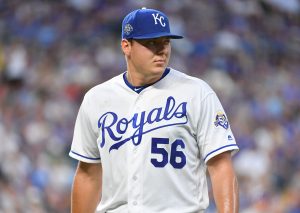 Those numbers for Keller have also been fairly consistent year-over-year, with his strikeout rate always falling between 16.3% and 19.6%, his walk rate between 7.8% and 10.4%, with his grounder rate between 47.8% and 54.4%. But as a ground ball pitcher, the one thing that’s not consistent is BABIP, or batting average on balls in play. Strikeout pitchers naturally have more control of their outcomes as they aren’t reliant on batted balls finding gloves and being fielded cleanly. A pitcher like Keller can be helped or harmed by randomness in this regard. For instance, in 2020, Keller’s BABIP dropped to .233, about 50 points below his previous seasons. That led to a career-best 2.47 ERA that year. However, the wheel of fortune spun him round the other way in 2021, as his BABIP shot up to .347 and took his ERA to 5.39.
Those numbers for Keller have also been fairly consistent year-over-year, with his strikeout rate always falling between 16.3% and 19.6%, his walk rate between 7.8% and 10.4%, with his grounder rate between 47.8% and 54.4%. But as a ground ball pitcher, the one thing that’s not consistent is BABIP, or batting average on balls in play. Strikeout pitchers naturally have more control of their outcomes as they aren’t reliant on batted balls finding gloves and being fielded cleanly. A pitcher like Keller can be helped or harmed by randomness in this regard. For instance, in 2020, Keller’s BABIP dropped to .233, about 50 points below his previous seasons. That led to a career-best 2.47 ERA that year. However, the wheel of fortune spun him round the other way in 2021, as his BABIP shot up to .347 and took his ERA to 5.39.